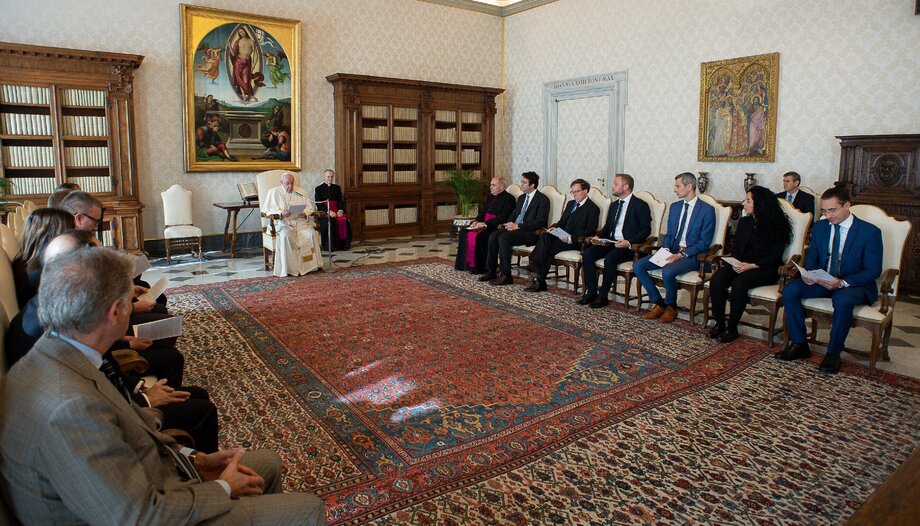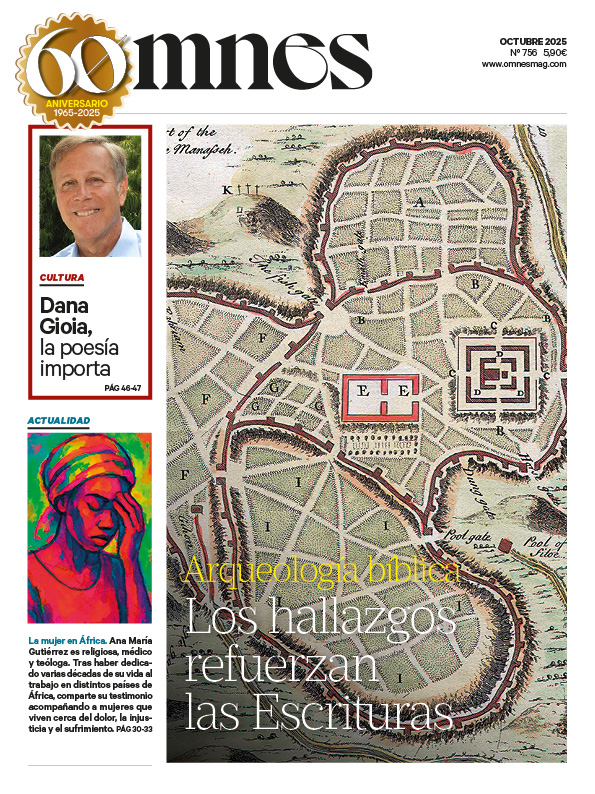There is a whole narrative concerning the Institute for Works of Religion (IOR), the so-called "Vatican bank", which defines the institute as a place of opaque business and dubious and opaque management of funds. And it is a narrative that has developed even recently, marking a before and after in the management of Vatican finances, and which describes the new management of the IOR as in total discontinuity with the previous management.
The facts, however, tell a different story, apart from certain judicial events that have seen former Vatican managers convicted of mismanagement (but the sentence is still under appeal, and it will have to be clarified whether it was really a question of mismanagement or rather of having complied with specific requests) or other judicial events that have paradoxically seen the IOR in conflict with the Secretariat of State, to which the Institute decided not to grant an advance of credit in the context of the now infamous acquisition of the Sloane Avenue building.
These are, by the way, recent lawsuits. Because before that, the IOR had been involved in the so-called Ambrosiano scandal, a financial crash for which the Institute, without acknowledging any personal responsibility, decided to compensate savers with a voluntary contribution as partial compensation for losses. It was the so-called "Geneva Agreement", recounted in detail by Francesco Anfossi in his book "IOR. Lights and Shadows of the Vatican Bank from the Beginnings to Marcinkus". Although it must be said that the IOR collaborated with the investigators from the beginning, and in fact there were also journalistic investigations - such as the book "Ambrosiano: il contro processo", by Mario Tedeschi, who was not pro-Church - that came to theorize that the IOR was used as a scapegoat to hide other responsibilities, attributable, according to the book, to the leadership of the Bank of Italy at the time.
And then there was the question of the Ustaša Treasury, an ugly affair according to which the blood-stained treasure that the Croatian Nazi Ustaša had seized on the basis of Jews deported during the war had passed through the IOR. It was Jeffrey Lena, who accepted the position of defense counsel for the Holy See when no one wanted to do so, who showed how all the arguments were basically speculation. All this shows how the myth of the IOR as a "Vatican bank" without any transparency can fall under its own weight. But what do the facts say?
The work of the IOR
On September 11, 1887, the cardinal's commission "Ad Pias Causas" was created. It is a secret commission, which meets in an office called "the black hole", because it was the place where the censorship of the Papal State was located and, by a nice irony, where Gioacchino Belli, who delighted us with a series of irreverent sonnets, worked as an employee. And it is a commission daughter of the "Questione Romana", because it serves to administer those goods, legacies and pious works that come to the Holy See and that this one tries to hide from the confiscation of the Italian State.
The Institute managed to guarantee the financial autonomy of the Holy See even when Rome was occupied by the Nazis (1943 and 1944), years in which its extraterritorial spaces, "in a city not yet open", sheltered and hid multitudes of Jews and anti-fascists. After all, that is what Vatican finances are for.
The fact is that the IOR is not a bank. It is a central organ of the Holy See: not an organ of the Curia, but an instrument to help, precisely, religious works. The IOR has no offices outside the Vatican, and has only recently obtained a Vatican IBAN, after the Holy See entered the SEPA transfer zone, that is, the Single Euro Payments Area.
The IOR's path to being recognized by foreign institutions as a reliable counterparty has been particularly long, as it has been for all financial institutions in the world.
John Paul II established the IOR's new statutes in 1990, while the first external audit dates back to the mid-1990s. In the 2000s, the IOR implemented a series of pioneering measures, which were also recognized by the international evaluators of Moneyval, the Council of Europe committee that assesses states' adherence to international standards against money laundering and terrorist financing.
Investments are always made prudently, according to the so-called rule of 3 (assets, gold, real estate), which ensures the necessary diversification of assets.
In times of crisis, gold is taken abroad; in times of need, it is invested in real estate, and these are also part of the benefits of employees, who can obtain houses at reduced prices. The IOR is independent in management, but in fact it is fundamental for the Holy See.
The IOR's audit work
It has often been pointed out that in the last decade the IOR has carried out a control of the accounts, among other things through expensive external consultants, such as the Promontory Financial Group, which then ended up in some judicial matters. However, it is enough to read the report of the Council of Europe's Moneyval Committee on the Holy See/Vatican City State, which assesses compliance with the financial rules of the countries that adhere to them, to understand how the IOR had long ago begun an operation of auditing and transparency of the accounts.
The report, published on July 4, 2012, gave an overall positive assessment of the legislative measures and reforms adopted by the Holy See and the Vatican to prevent and combat illicit activities of a financial nature. In particular, it recognized the IOR's efforts to adapt to international standards. And not only that.
According to the report, the IOR's customer due diligence procedures "in some cases go beyond the requirements established" by the first Vatican anti-money laundering law (i.e., Law No. CXXVII, which was amended by the Decree of January 25, 2012 also because of these deficiencies). We read in paragraph 471 that "the procedures partially contain requirements that were missing or unclear in the original version of the AML Law".
This mitigates to some extent the negative impact on effectiveness due to the fact that a significant number of elements of the legal framework were not introduced until after Moneyval's first on-site visit.
In paragraph 476, then, the Moneyval report noted that "the IOR began a review and update of the customer database in November 2010. The IOR has shown a clear commitment to complete the process by the end of 2012. Six people are involved in this project and are actively reaching out to clients for updated information. By the end of 2011, the Institute had updated its client database module of approximately 50% of individuals and 11% of legal entities."
Data from the latest report
The latest IOR annual report was published in June 2023 and refers to 2022. Some figures may help to understand it. In 2022, the IOR had 117 employees and 12,759 clients. Compared to 2021, there are more employees (there were 112), but far fewer clients: in 2021, the IOR had 14,519 clients.
Considering that the screening of accounts considered not compatible with the IOR's mission ended some time ago, the first impression is that the IOR is no longer an attractive place for its first clients, i.e. religious institutions. Just an impression, of course, but a sobering one.
The report noted that in 2022 the IOR had 29.6 million euros of net profit, a significant increase over the previous year, but still on a downward trend that, despite some recovery, seems constant since 2012. In fact, it goes from the 86.6 million profit declared in 2012 - which quadrupled the previous year's profit - to 66.9 million in the 2013 report, 69.3 million in the 2014 report, 16.1 million in the 2015 report, 33 million in the 2016 report and 31.9 million in the 2017 report, to 17.5 million in 2018.
In contrast, the 2019 report quantified the profit at €38 million, which was also attributed to the favorable market. In 2020, the year of the COVID crisis, the profit had been slightly lower, at €36.4 million. But in the first year after the pandemic, a 2021 still unaffected by the war in Ukraine, it was back to a negative trend, with a profit of only €18.1 million.
Now, we are back on the threshold of 30 million profits, but it remains to be seen whether these profits include the 17.2 million seized from former president Angelo Caloia and Gabriele Liuzzo, who had to answer for embezzlement and self-laundering committed in connection with the process of divestment of the huge real estate assets owned by the Institute and its subsidiaries, SGIR and LE PALME. whose sentences had become final in July 2022. In this case, we would be talking about much lower actual profits.
Of these profits, 5.2 million euros were distributed: 3 million euros for religious works of the Pope, 2 million euros for charitable activities of the Cardinal's Commission and 200,000 euros for charitable activities coordinated by the prelate of the Institute.
There is a technical figure to keep in mind, namely TIER 1, which is the main component of a bank's capital. In 2019, it was 82.40%. In 2022, however, TIER is 46.14%, certainly up from 38% in 2021, but still indicative of a halving of capital. Still a robust TIER 1, well above the figures required of European banks, but still showing a halving of capital in prospect.
According to the IOR, "the Moneyval rating places the Institute as one of the highest rated institutions in the world". The IOR currently works with more than 45 different financial counterparties. To give some figures, in 2022 the IOR received 5.2 billion resources in entrustment and carried out 100,000 payment transactions. The net assets amount to 578.5 million euros.
Beyond the figures, IOR President Jean-Baptiste de Franssu stressed in his address to the report that "the quality of products and services has improved significantly, ethics has become a constant point of reference, both in the management of resources and in the governance of the Institute, and the relationship with clients is more than ever at the heart of every commitment," while IOR Prelate Giovanni Battista Ricca emphasized that targets have been greatly reduced thanks to "greater awareness." It must be said, however, that the IOR's investments have always been conservative, aimed at not affecting the patrimony too much, which is what is always allocated to religious works.
Moneyval's latest report
Rather than a paradigm shift, the IOR has worked in the wake of continuity with previous management. The latest Moneyval report - actually a very technical follow-up - was published on May 28 and showed how the IOR has continued to make technical improvements. Previously, the Holy See was "non-compliant" with Recommendation 13 on correspondent banking, while some "minor deficiencies" remain in relation to Recommendations 16 and 24 on transfers and legal persons, but they are now "broadly compliant," whereas previously they had been assessed as non-compliant.
In summary, of the 39 applicable recommendations, the Holy See now complies or largely complies with 35 points, and partially complies with 4 of the recommendations. Technical details, one might say. But they are important to demonstrate that Vatican finances are not, indeed, a place of lack of transparency and possible criminality. There is the IOR of the media and the IOR of reality. And the reality says that the IOR has worked and continues to work to fully comply with international standards.







